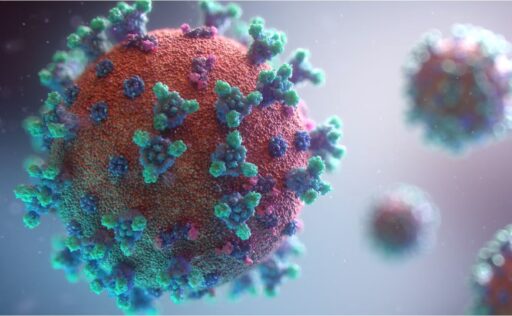In the future, a minor condition like an ear infection, strep throat, or an infected cut could be deadly. Medical treatments like chemotherapy, treatment for premature babies and organ transplants, may be too risky to perform. Some scientists estimate that by 2050, 10 million people a year will die from antibiotic-resistant infections, surpassing the number of cancer deaths. This is primarily because of the overuse of antibiotics on factory farms. Data proving their link comes from epidemiological studies, observational studies and randomized trials. So, what exactly is the link between antibiotic resistance and factory farming?
- Antibiotic overuse and poor hygiene on factory farms
- Antibiotic resistance is rapidly spreading
- Contaminated meat is the rule, not the exception
- Isn’t anyone stopping this?
- Pushback from the factory farming industry
- Animal misuse is the primary contributor to antibiotic resistance
- Why meat raised without antibiotics isn’t enough to solve the problem
- We must act now or face a post-antibiotic world
Antibiotic overuse and poor hygiene on factory farms
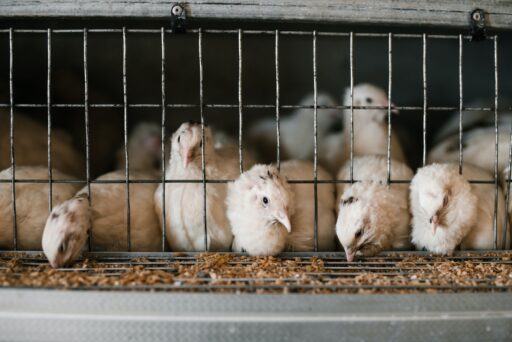
Farmed animals live in cramped, filthy conditions that create perfect breeding grounds for bacteria to spread. These unnatural conditions make the animals more stressed and susceptible to disease. Decades ago, factory farms discovered that giving farmed animals low doses of antibiotics in their feed would help reduce disease and reach slaughter weight more quickly, increasing their profits.
The problem is that overuse renders antibiotics less and less effective. While the drugs may work at first, the few microbes with the genes to resist them reproduce and pass on their resistance to more bacteria. These resistant microbes are then transmitted to workers and nearby communities through close contact, the soil and the air. They also transmit to you through consumption.
According to Professor Lance Price, the founding director of the Antibiotic Resistance Action Center who was featured in the documentary The End of Medicine, this combination of poor hygiene and high drug use together fuels the growing antibiotic resistance crisis.
Antibiotic resistance is rapidly spreading

Over 70% of all antibiotics used worldwide are used on farmed animals, not people. Some of those used in the industry are used in human medicine and some are not. But all our antibiotics are at risk because of what’s called “horizontal infections.”
Research shows drug-resistant DNA easily can jump between different species and strains of bacteria to make other species and other infections resistant to the antibiotics as well. In other words, using one antibiotic can select for resistance in another. For instance, increasing levels of resistance to an antibiotic used on a farm may also increase resistance to penicillin.
With repeated exposure to antibiotics, bacteria mutate to reproduce more quickly and stay resistance, even once antibiotics are removed. Even worse, further antibiotic use only feeds the growth of the resistant bacteria, making them reproduce and become stronger more quickly.
Contaminated meat is the rule, not the exception

According to Philip Lymbery, CEO of Compassion in World Farming, “Government mantra is often about cheap food, to produce cheap meat for the masses. But what that disguises is the true cost of that cheap meat.” Part of the cost is that most meat contains antibiotic resistance bacteria.
In 2015, federal research found that between 36-79% of meats in the supermarkets contained antibiotic-resistant bacteria, depending on the type of meat. According to the CDC, about 48 million people in the US get sick each year from eating contaminated food. Of this, contaminated beef, pork and poultry are responsible for 40% of it.
Poultry

About 97% of retail chicken breasts harbor human pathogens, like Salmonella and E. coli, according to a 2014 Consumer Reports survey. Almost half contain one or more antibiotic-resistant bacteria, as well as fecal matter. Even chicken labeled “organic” or “no antibiotics” contained antibiotic-resistant human pathogens.
Pork
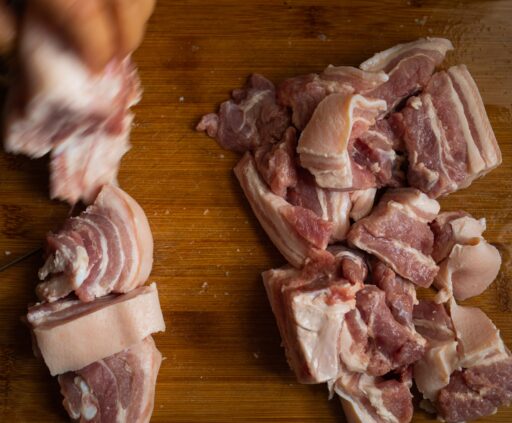
Over 90% of retail pork contains antibiotic resistant bacteria, according to a 2013 Consumer Reports survey. About 70% contains bacteria that cause gastrointestinal infection, in addition to other food pathogens like Listeria, Staph and Salmonella and fecal matter.
Beef

There’s about a 100% chance that the ground beef in your supermarket is contaminated with fecal bacteria. Additionally, about 14% of ground beef contain antibiotic-resistant bacteria.
Animal agriculture even contaminates plants

Even vegetarians aren’t safe from consuming foods infected with antibiotic-resistant bacteria, unfortunately. Produce commonly come into contact with poorly composted manure via irrigation, flooding or improper hygiene after contact with animal products.
Isn’t anyone stopping this?
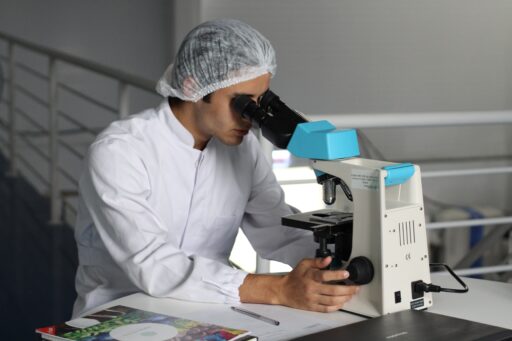
Despite the fact that microbiologist Stuart Levy sounded the alarm for antibiotic resistance in 1976, little actions has been taken. There is currently no monitoring on antibiotic use in factory farms. Numerous public health organizations have advocated against it, and politicians have introduced legislation to no avail. Rather than protecting the public, governments are protecting agribusiness industries instead.
World Health Organization (WHO)
The WHO has attempted to reduce this threat to public health for decades. In 2014, it labeled antibiotic resistance “a major threat to public health.” WHO guidelines recommend eliminating antibiotic use both for growth promotion and for disease prevention (in healthy animals considered at risk of infection). It recommends not using any antibiotics that are critical for humans in farmed animals – unless testing shows it to be the only option.
Lastly, the WHO urges veterinarians, farmers, regulatory agencies and all other stakeholders to implement these guidelines. The WHO has been releasing updated lists of Critically Important Antimicrobials for Human Medicine (WHO CIA List), with the fifth revision published in 2016. Concerningly, factory farms continue to use some of these critically important antibiotics.
A half-hearted effort from the FDA
In response to WHO recommendations, the Food and Drug Administration released voluntary, non-legally-enforceable guidelines in 2012 and 2013. These guidelines ask veterinarians not to prescribe medically important antibiotics solely for growth promotion.
Of course, the animal agriculture industry has easily sidestepped this limitation. They continue to dish them out at ever-increasing volumes, merely saying that the drugs were being used to prevent disease instead. As long as we continue to buy their products, they will continue abusing antibiotics for profit at the cost of public health.
Thwarted legislation
Several congress people have introduced bills attempting to regulate antibiotic use on factory farms. The Preservation of Antibiotics for Medical Treatment Act has been on the table for a decade, supported by 454 organizations. But it has repeatedly gone to the Health subcommittee of the House Energy and Commerce Committee to die. This is because veterinary pharmaceutical companies or animal agriculture industries have made campaign donations of more than $15,000 to members of this subcommittee.
Pushback from the factory farming industry
Industry has employed several strategies to prevent the ban of antibiotics in farming. These include limiting research that proves the harm, lobbying against legislation that would restrict it, protesting the cost of raising animals without antibiotics and blaming smaller contributors to the issue.
In an effort to limit the available data indicting factory farms as a breeding ground for antibiotic resistant bacteria, most refuse to let researchers on the farms. This is often not the fault of individual farmers, who must contract with meat producers like Tyson or Smithfield to foot the cost of starting their business. These industries are the ones who tell them to keep researchers away. By reducing available data, industry can more easily fight regulations.
For instance, when the FDA was considering banning several antibiotics from animal feeding in 1977, the industry argued that there was no absolute proof of harm. As a result, the FDA released voluntary guidelines only. Animal agriculture industries have also used hundreds of thousands of dollars lobbying against antibiotic-related legislation. One of their primary arguments is that banning antibiotics all together would increase costs. Yet a 2015 study found that increasing the price of beef by just 6.3%, would offset the net revenue losses for the feedlot operator.
Animal misuse is the primary contributor to antibiotic resistance
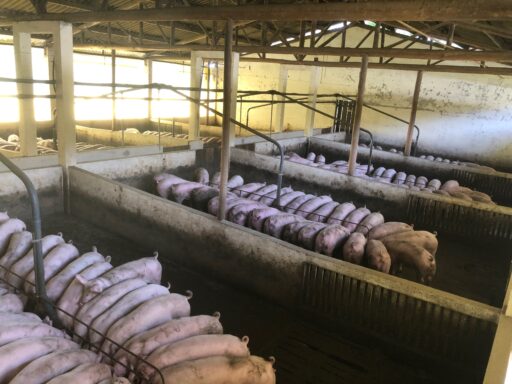
The industry also attempts to distract from the issue at hand by saying antibiotic resistance would be growing even without factory farming. Physician and lifestyle medicine specialist Dr. Chidi Ngwaba counters this argument, saying, “Even if all doctors stopped prescribing antibiotics, the animal industry is using so many antibiotics that what we do makes very little difference.”
Former livestock vet and whistleblower Dr. Alice Brough, dismisses their arguments, too. Brough says, “The industry says, ‘We’re not the only ones to blame’ to try to rid themselves of blame entirely. [It] says, ‘We’re making an effort to reduce usage.’ But it’s not enough.”
Animal viruses have existed for millions of years without posing a threat to humans. But we have introduced the threat to ourselves. We pack them together in industrial farms, deforest their habitats, and ship them across the globe in the wildlife trade. In doing so, we bring numerous animals into close contact with ourselves and other animals they would not interact with naturally. This allows pathogens to spread easily, jumping and mutating from species to species.
Why meat raised without antibiotics isn’t enough to solve the problem
Even meat labeled ‘antibiotic-free’ is not guaranteed to be so. One of the most deadly drug-resistant microbes (MRSA, the drug resistant form of the otherwise harmless S.aureus bacteria) is almost as common in pork labeled “raised without antibiotics” as it is in conventionally produced pork. The label “antibiotic-free” is not regulated – it runs on the “honor system.” Transmission may happen via the air if the operation is close to an antibiotic-using facility, or from farm workers.
Although the “certified organic” and “grass fed” labels have strict standards and are less likely to contain antibiotic-resistant bacteria, the take-away from this article is not to switch to organic meat. Antibiotic-resistant bacteria is just the tip of the iceberg when it comes to problems with eating animals and animal products.
We must act now or face a post-antibiotic world

The fact that the animal agriculture industry has actively resisted changing despite critical, urgent public health concerns is unsurprising. Like the tobacco industry, the asbestos industry and the oil industry, “Big Ag” is just another corrupt industry in a long line of corporations subverting public health.
According to Professor Dame Sally Davies, Special Envoy on antimicrobial resistance for the UK government, “Antimicrobial resistance (AMR) will kill us before climate change. AMR is a pandemic; it’s just a slow growing one. The end result will be… the post antibiotic era – much longer hospital stays, higher mortality… [we’ll be] going back to the era before penicillin.”
Unless we act, we will soon enter a post-antibiotic world – the end of medicine as we know it. As Professor Price of the Antibiotic Resistance Action Center put it, “It sounds hyperbolic to say ‘the end of medicine,’ but…eventually we’re going to run out of ways to safely kills these pathogens.” The scientific advisor of the Alliance to Save Our Antibiotics, Colin Nunan, affirms this prediction. As he warns, “There is no doubt that if we continue on this path we are headed for an antibiotic apocalypse.”
What can we do? At the end of the day, consumer demand drives industry. What we buy at the grocery store shapes our future – for better or worse.
